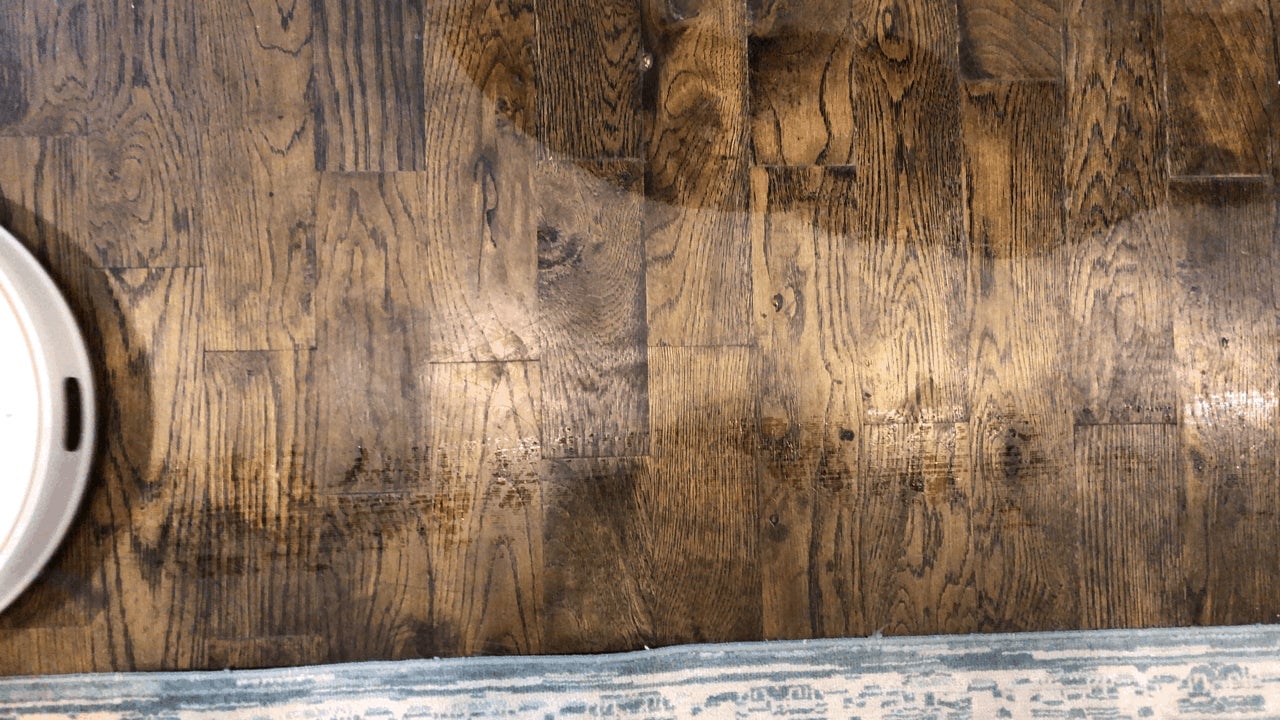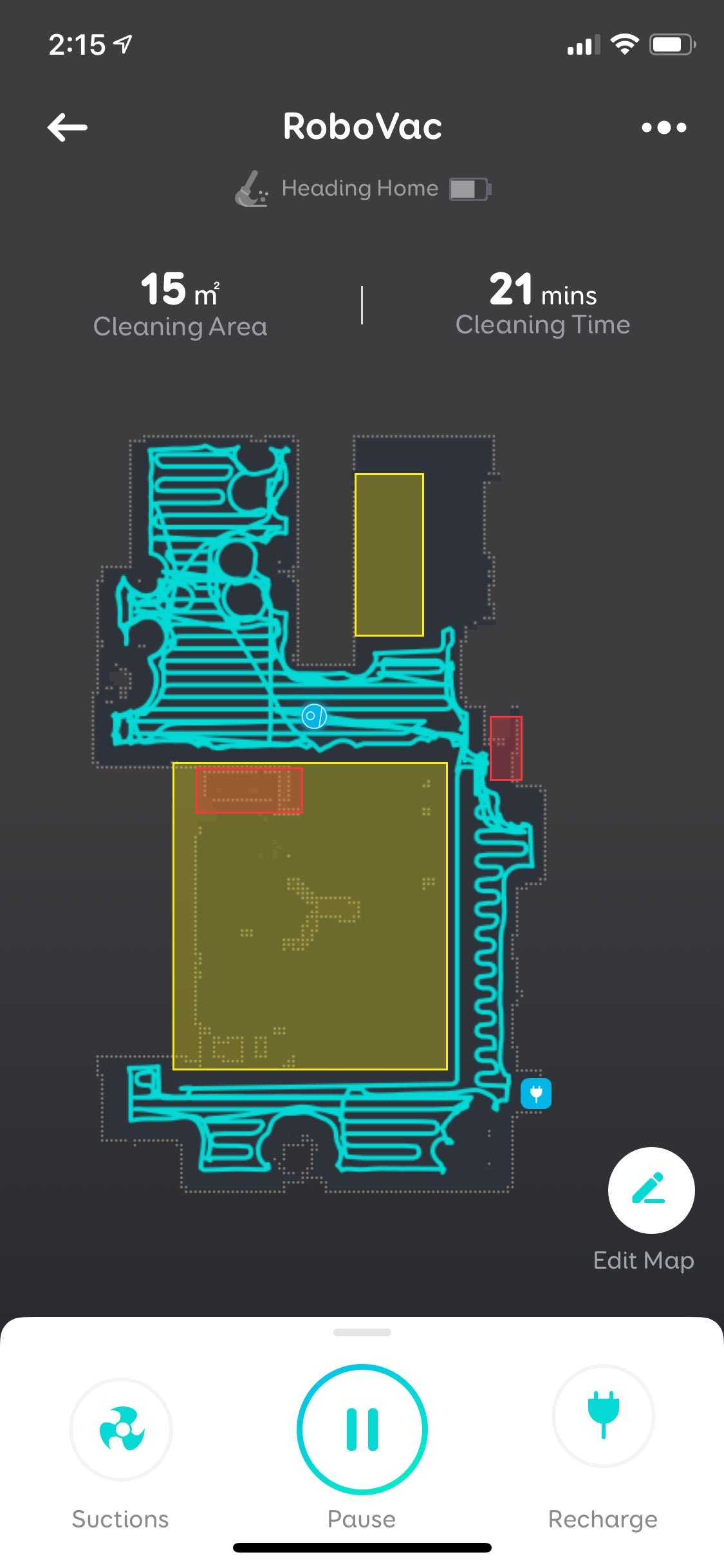Anker's Ambitious New RoboVac Packs a Mop and Freakin' Laser Beams
Anker first joined in the robotic vacuum arms race about three years ago, and has come out with new, iterative improvements every few months since (of which our readers have purchased thousands). Each new Anker (and later Eufy) RoboVac offered more powerful suction, a thinner profile, Wi-Fi support, or some combination thereof to justify its existence, and the latest models more than stand up to the “name brand” alternatives from iRobot.

Anker first joined in the robotic vacuum arms race about three years ago, and has come out with new, iterative improvements every few months since (of which our readers have purchased thousands). Each new Anker (and later Eufy) RoboVac offered more powerful suction, a thinner profile, Wi-Fi support, or some combination thereof to justify its existence, and the latest models more than stand up to the “name brand” alternatives from iRobot.
Suggested Reading
But the RoboVac L70 Hybrid is something totally new; it’s a huge leap forward in the line in a few important ways.
Related Content
The L70's performance as a vacuum is perhaps its least exciting improvement over previous models, but it’s impressive nonetheless. Boasting a maximum 2200pA of suction power, it’s a huge leap forward from the 1500pA that most of Anker’s RoboVacs boast these days, and miles better than the original model’s 500. It’s not just powerful for a robot; it’s powerful for a vacuum, period.
Despite that extra power, the L70 runs exceptionally quietly and is far less disruptive than my old Roomba 600 series robotic vacuum. You can also customize its suction power to optimize for noise and battery life, or for sheer power, and built-in sensors can also boost the suction when needed for particularly messy areas on your floor.

The L70 isn’t the first robotic vacuum to feature LIDAR room mapping, but it is Anker’s first, and they seemed to nail the implementation. An array of guidance lasers emanating from a hump on top of the vacuum constantly map out your floor and detect any large obstacles in the way, generating an always-up-to-date map that you can view in real time on your phone.
This ensures that the RoboVac hits every corner of your home, rather than ping ponging around at random like previous models. But perhaps more importantly, it lets you set no-go zones and no-mop zones (more on that later, not to bury the lede) by just drawing rectangles on the map. If you have a spot under your furniture with lots of cords, or a pet’s water bowl, you can tell the RoboVac to steer clear without laying down physical boundary strips, or plugging in virtual walls. As a longtime Roomba owner that has long struggled with these kinds of soft obstacles, this is a massive quality of life improvement.
Unfortunately, the lasers won’t stop your RoboVac from getting its brush roll clogged with small cat toys, and the sensor array adds a not-insignificant amount of height to the robot (it totals 3.96" high, compared to 2.85" on Anker’s thinnest models), which means it won’t fit under as many types of furniture. It also means that you can’t easily set the L70 down on another floor of your house and expect it to just bop around and clean your bedrooms. I tried, and the L70 quickly realized it was in an unfamiliar setting, and just...gave up. That said, the pros far outweigh the cons, at least in my view.
To put the L70 into mopping mode, you just have to add some water to the resevoir in the removable dust bin, and click the mopping pad attachment into place. Best of all, it’ll still work as a vacuum as it mops (albeit at the low suction setting), so it’ll pick up any dust and large debris off the floor before dragging the wet mop pad across the same spot.
If you have any rugs or other spaces on your floor that shouldn’t get wet, you can draw No-Mop Zones on your LIDAR-generated map to tell the RoboVac where to avoid. In my testing, it took a bit of trial and error to get the sizes of the rectangles just right, since rugs don’t show up on the map, but as long as you don’t move the RoboVac’s base station or rearrange all of your furniture, it’ll preserve all of your zones between cleanings so you only have to set them up once.
It should be noted that this stretches the definition of the word “mop” a bit. It’s basically dragging a wet dusting cloth across your floor, which is a far cry from scrubbing with chemicals on your hands and knees. But performed on a regular basis, it’ll definitely keep your floors looking and feeling a lot cleaner than they would otherwise. It’s basically a Swiffer that operates autonomously, which is great, but don’t expect any cleaning miracles.
At $550, this is by far Anker’s most expensive RoboVac (though, naturally, we expect that there will be deals), but that price tag speaks to the product’s ambition. Coming out with a wet mopping vacuum or a LIDAR-guided RoboVac wouldn’t have been unexpected, but seeing them both debut in the same product is a welcome surprise.
By now, I suspect that most of our readers own a robotic vacuum of some kind, but Anker makes a strong case for putting your old model on “second floor duty,” so that the L70 can take the helm of your automated cleaning armada.

